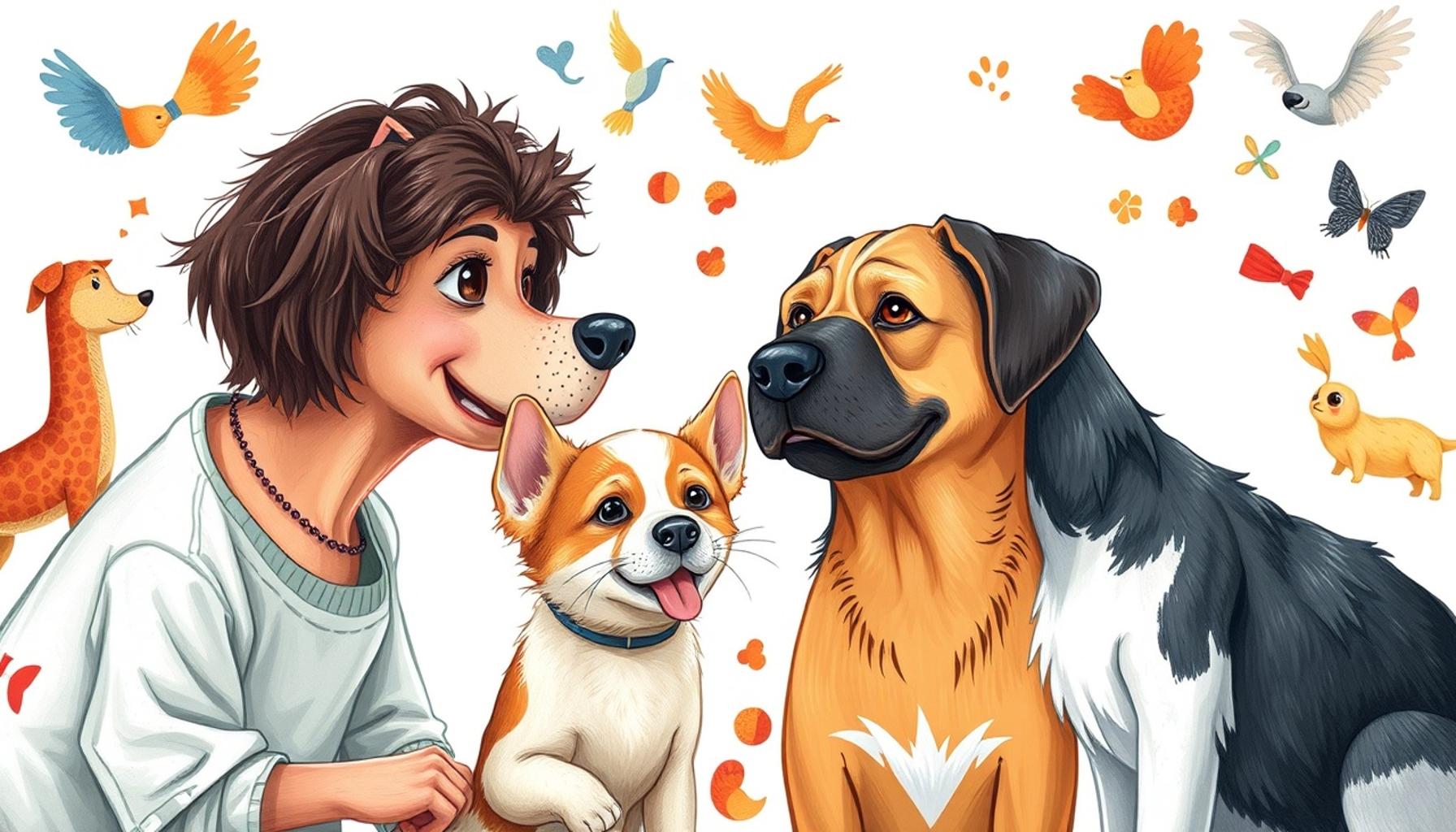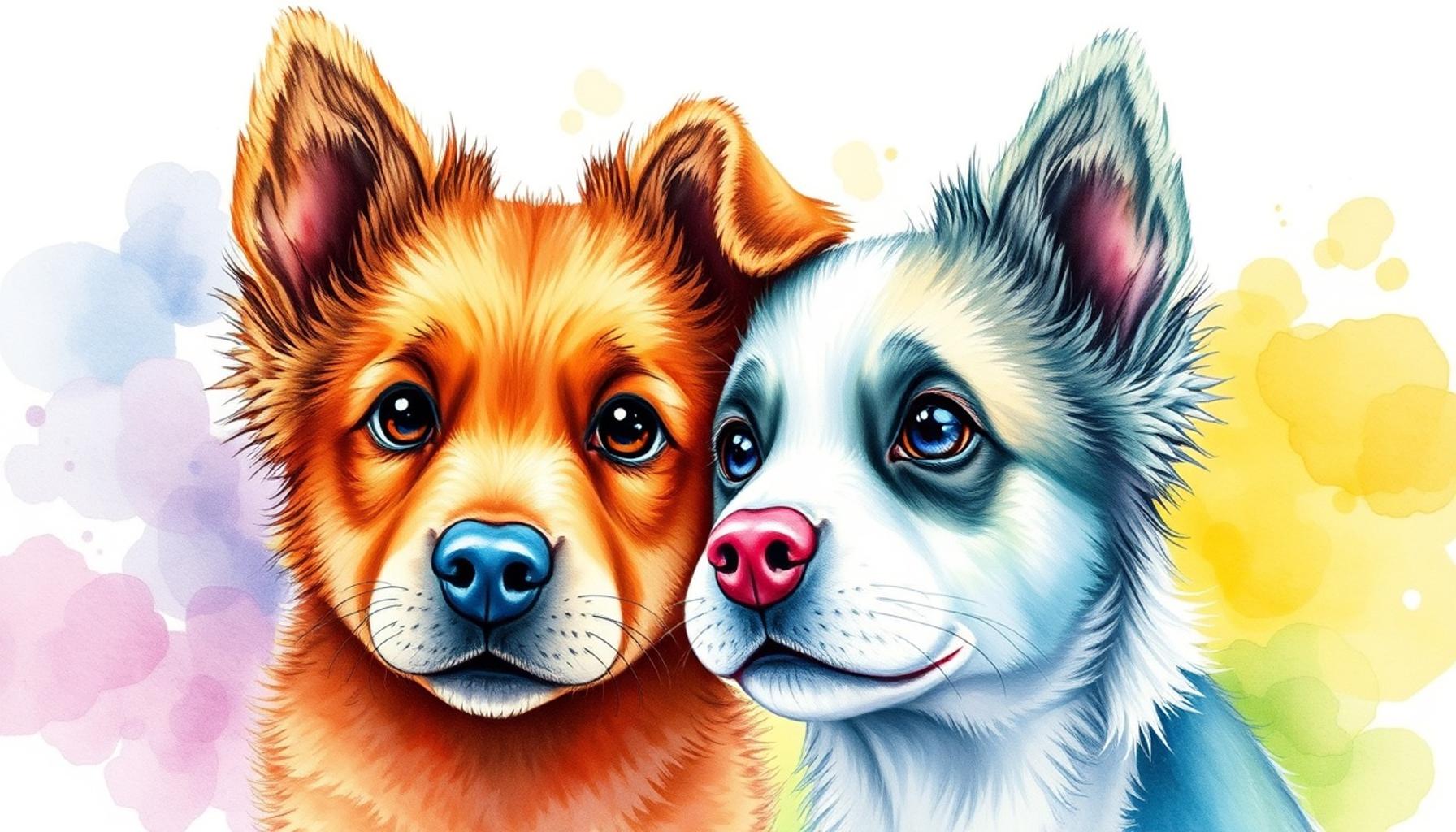Training Techniques for Senior Animals: Adapting Teaching to the Needs of Older Pets

Understanding the Unique Needs of Senior Pets
As our furry companions age, their training requirements change significantly. Senior animals may have different physical abilities, cognitive functions, and emotional needs compared to their younger counterparts. Recognizing these shifts is essential for effective training and fostering a fulfilling bond with your older pet. Adjusting our approach not only assists them in learning but also enhances their quality of life during their golden years.
Key Considerations for Training Older Pets
When adapting teaching methods for senior animals, several crucial factors must be taken into account:
- Physical Limitations: Many senior pets experience decreased mobility due to arthritis, joint pain, or other age-related issues. For instance, a once-active dog may struggle with jumping or sitting for extended periods. It is vital to modify commands to suit their physical capabilities, such as asking them to “lie down” or using hand signals that require less movement.
- Cognitive Changes: Aging can lead to slower learning speeds or even mild cognitive dysfunction syndrome (CDS), which can manifest as confusion or forgetfulness. Patience is essential; owners should set realistic expectations and use repetitive reinforcement techniques. Keeping training sessions short—around 5 to 10 minutes—can prevent overwhelming older pets and keep them engaged.
- Training Environment: A calm and quiet setting is particularly important for senior pets who might be more sensitive to noise and activity. Designating a specific area in the house for training with minimal distractions can foster a more comfortable learning experience, allowing pets to focus better on commands.
By understanding the unique challenges faced by older pets, owners can tailor their training techniques to support their furry friends effectively. This not only enhances the learning experience but also strengthens the emotional connection between pets and their humans, creating a whole new level of companionship.
Benefits of Tailored Training
Implementing specialized training methods for senior animals can lead to numerous benefits, such as:
- Improved behavior and socialization: Consistent training encourages better behavior patterns, helping prevent issues such as excessive barking or anxiety in social settings.
- Enhanced mental stimulation: Providing mental challenges through tricks or puzzle toys can prevent cognitive decline. For example, using treat-dispensing toys encourages independent problem-solving, which is essential for an older pet’s mental health.
- Increased quality of life and overall happiness: Tailored training can boost confidence and independence, resulting in a more engaged pet who enjoys their day-to-day activities, whether it’s walking to the park or simply exploring the backyard.
Ultimately, adapting training techniques to the needs of senior pets reflects our commitment to their well-being and happiness. Embrace the journey of learning together as you unlock new ways to enrich your beloved companion’s golden years. In doing so, you not only provide them with a better life but also gain invaluable experiences that celebrate the deep bond you share.

DIVE DEEPER: Click here to discover effective strategies
Adapting Training Techniques for Older Pets
As we embark on the journey of training senior animals, it’s crucial to understand that their unique adaptations must be respected and integrated into our training approach. The best training techniques focus on building a strong foundation tailored to the individual pet’s needs, thus ensuring a successful learning experience. Here are some vital strategies to employ when working with older pets:
Establishing Trust and Security
Before diving into specific training methods, establishing a baseline of trust and security is essential. Senior pets often carry experiences from their pasts, which may influence their willingness to learn. To foster a safe environment:
- Use positive reinforcement: Rewarding successful actions with treats, praise, or affection helps senior pets feel more secure and encourages them to engage actively in training. Positive reinforcement nurtures their confidence and strengthens your bond.
- Be consistent in commands: Consistency in the commands used is vital. Using the same words and gestures allows older pets to associate specific actions with clear cues, reducing confusion and fostering quicker responses.
- Encourage a gradual approach: When introducing new commands or tricks, take the time to break down the process into manageable parts. Gradually introducing new concepts enables pets to absorb information without feeling overwhelmed.
Incorporating Structure into Training Sessions
For the most effective training, structure your sessions in a way that accommodates your senior pet’s cognitive and physical capabilities. Maintaining a manageable schedule not only aids learning but also sets clear expectations:
- Short sessions: Keeping training sessions between 5 to 10 minutes allows elder pets to maintain focus without fatigue. Over time, you can progressively increase the duration as their stamina improves.
- Use familiar routines: Incorporating familiar activities into training sessions, such as feeding or walks, can motivate older pets. This creates a sense of normalcy and comforts them, aiding in overall learning.
- Practice frequently: Engaging in short but frequent training sessions reinforces learning. Aim for multiple opportunities throughout the day to practice commands, keeping them fresh in your pet’s mind.
By adapting training techniques to suit senior pets, you not only enhance their cognitive abilities but also support their physical and emotional health. This thoughtful approach creates a nurturing atmosphere where your older companions can thrive while learning. Recognizing the distinct characteristics of senior animals, such as the need for patience and simplicity, allows owners to become effective trainers—while deepening their connection with their beloved pets.
| Category | Key Features |
|---|---|
| Tailored Approaches | Utilizing techniques that cater specifically to an older pet’s cognitive and physical limitations enhances their learning experience. |
| Sensory Engagement | Using gentle sounds, scents, and visuals can stimulate older animals effectively, making training more engaging. |
| Patience and Positivity | Adopting a calm demeanor and positive reinforcement is crucial; it creates a safe space for pets to explore learning. |
| Short Sessions | Implementing short and frequent training sessions prevents overwhelming the pet and keeps their engagement high. |
When implementing training techniques for senior animals, understanding their individual needs is vital. For instance, older pets may have decreased mobility, requiring adjustments in the way commands are given and learned. Meanwhile, physical aids that provide comfort or support can greatly enhance their ability to participate fully. Moreover, consistent, short sessions allow these pets to process information without fatigue; this is particularly beneficial as older animals may tire quickly. The use of positive reinforcement can also lead to more successful learning outcomes. For instance, offering treats or affection when they perform a command correctly builds a productive training environment and reinforces desired behaviors.Engaging with older animals means prioritizing their comfort and capacity to learn, making the process a rewarding experience for both the pet and owner. Emphasizing these techniques not only promotes successful learning but also strengthens the bond between pets and their caregivers.
DISCOVER MORE: Click here to find out how a balanced diet can improve your pet’s life
Understanding the Physical and Cognitive Limitations
Training senior animals requires an acute awareness of their physical and cognitive limitations. Just like humans, pets contend with age-related issues that can impact their ability to learn and participate in activities. Recognizing these limitations is vital for creating a supportive training program.
Physical Considerations
Many older pets experience diminished mobility, joint pain, or other health conditions like arthritis. Keeping these physical challenges in mind will not only influence how you conduct training sessions but will also affect the types of commands or actions you introduce:
- Modify physical movements: Instead of asking senior dogs to jump through hoops or perform high-impact activities, consider low-stress alternatives like “sit” or “down.” Such commands engage their minds while being mindful of their physical capabilities.
- Use comfort aids: Employing supportive gear like non-slip mats can help provide stability during training sessions. This adjustment encourages older pets to participate without fear of slipping or falling, enhancing their confidence as they learn.
- Monitor health: Regular veterinary check-ups are essential in understanding an older pet’s health status. Keeping an eye on any sudden changes will allow you to adapt your training strategy accordingly, ensuring safety and an optimal learning environment.
Cognitive Engagement through Enrichment
Senior pets may encounter cognitive decline, potentially impacting their ability to absorb new information. To tackle this challenge effectively, consider engaging them through mental stimulation and enrichment:
- Interactive toys: Utilize puzzle feeders or challenging toys that require seniors to engage their problem-solving skills. These activities not only provide fun but can also help keep their minds sharp, facilitating easier training sessions later.
- Variation in training tasks: Introduce a variety of commands and tasks to keep sessions interesting. Mixing commands such as “shake,” “roll over,” or “spin” with traditional commands can stimulate their cognitive responses and prevent learning stagnation.
- Tap into their senses: Utilize their sense of smell to enhance training. Rewarding older pets with treats that cater to their olfactory senses can motivate them to expand their learning horizons, as they become more engaged with commands associated with familiar scents.
Patience is Key
As you engage with older pets, it’s essential to foster an atmosphere of patience and understanding. With age, senior animals may require more time to grasp new concepts. Their reaction times may be slower, and their learning pace might differ significantly from younger pets. Here are some tips for exercising patience:
- Allow for pauses: If your pet appears confused or hesitant, give them time to process the commands or actions you’re introducing. This pause can lead to improved comprehension and encourage them to take the initiative to try something new.
- Celebrate small victories: Every step forward, no matter how minor, should be acknowledged. Recognizing achievements fuels their desire to participate, fostering a positive learning experience for both pet and owner.
- Reduce distractions: Creating a calm training environment can minimize external distractions, making it easier for senior pets to focus on learning. Training in familiar, quiet spaces can lead to more successful outcomes.
By understanding and respecting the limitations of senior pets, their training can be transformed into a nurturing experience that complements their unique needs. With thoughtful techniques and a patient approach, owners can stimulate their aging companions, ensuring their happiness and well-being while promoting continued learning. By incorporating these methods, caregivers not only enhance their pets’ quality of life but also strengthen the bond they share with their aging friends.
DISCOVER MORE: Click here to learn about early socialization
Conclusion
In conclusion, the journey of training senior animals offers us a unique opportunity to deepen our connection with our beloved older pets. With their special physical and cognitive needs in mind, innovative training techniques can be customized to enhance both their learning experience and overall well-being. As we’ve explored, addressing their physical limitations through adapted movements and supportive tools allows for a more comfortable training environment. Furthermore, infusing mental stimulation into their routines through engaging games and diversified tasks keeps their minds sharp and promotes an enjoyable learning atmosphere.
The emphasis on patience is paramount; acknowledging that senior pets may need more time to understand commands fosters a collaborative spirit in which both pet and owner can thrive. This positive reinforcement not only leads to successful outcomes but also strengthens the invaluable bond between them. As we recognize the resilience and adaptability of our aging companions, it becomes clear that tailored training techniques can significantly enhance their quality of life.
In a society that increasingly values pet companionship, investing time and effort into adapting training strategies for senior animals is both rewarding and beneficial. By committing to understanding their unique needs, we can create a nurturing environment that promotes lifelong learning and happiness. As you embark on this heartwarming adventure, remember that every small step forward is a celebration of love, resilience, and the cherished moments shared with our older pets.



